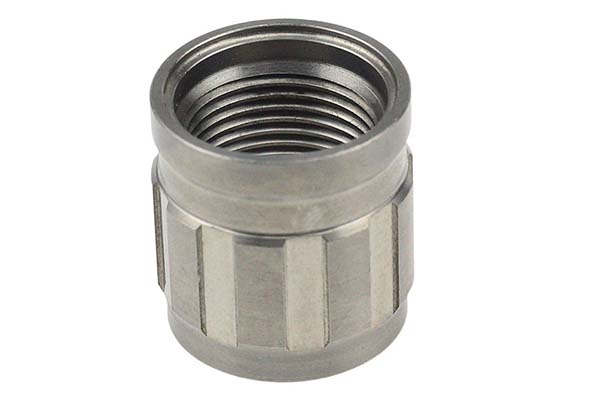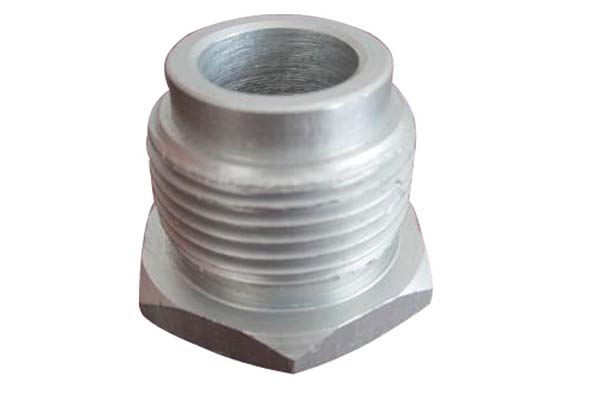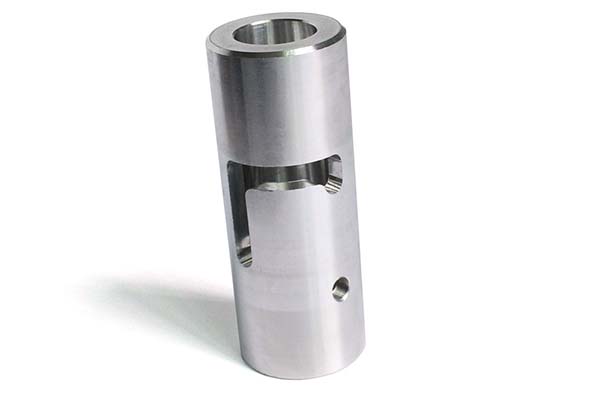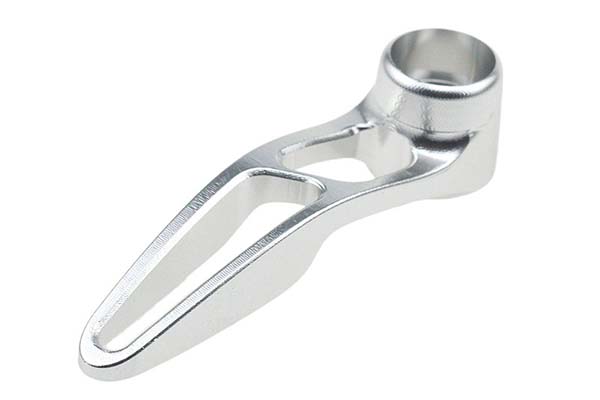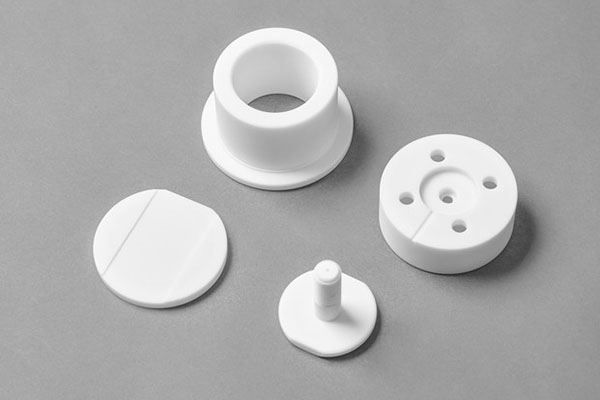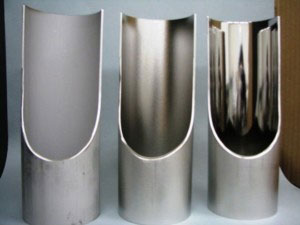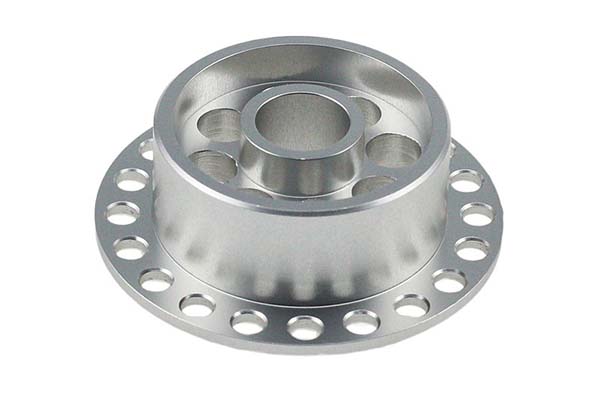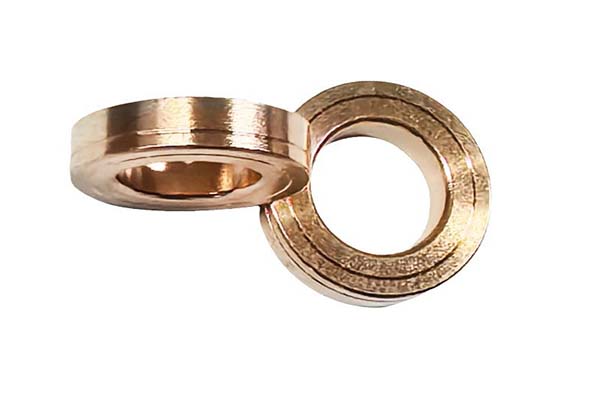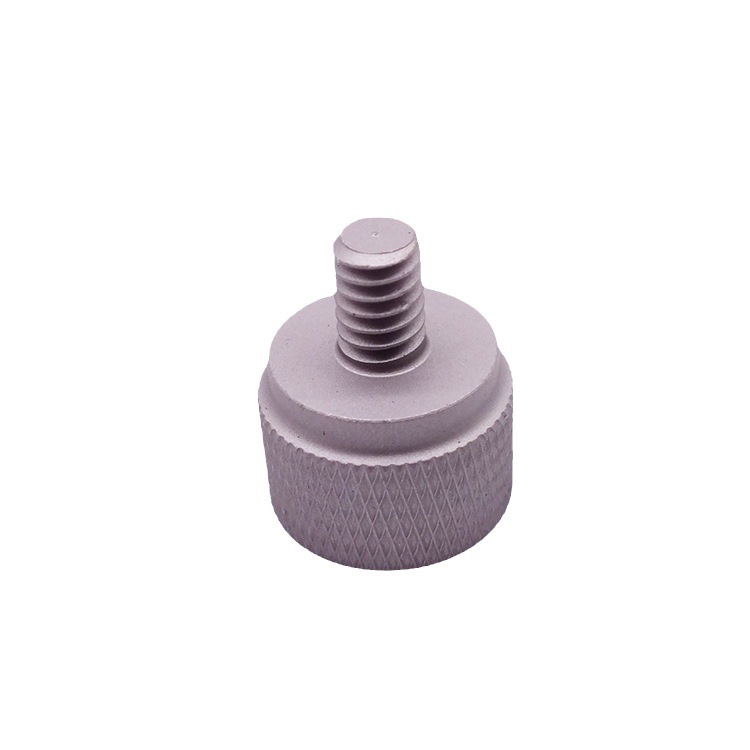Manufacturers seeking a combination of high strength, corrosion resistance, and formability often turn to 17-7PH stainless steel. As a precipitation-hardening (PH) stainless steel, it achieves exceptional strength through heat treatment, but machining it presents unique challenges. Its tendency to work hardening—exacerbated by its high alloy content—leads to rapid tool wear and increased cutting forces. Additionally, its magnetic properties and sensitivity to heat treatment timing demand precise process control. Distinguishing its capabilities from other PH grades (like 17-4PH) or austenitic stainless steels requires clear material knowledge to avoid performance gaps. This guide addresses these pain points, offering proven strategies to optimize CNC machining 17-7PH for efficiency, quality, and reliability in high-stress applications.
Material Overview of 17-7PH
17-7PH stainless steel is a precipitation-hardening alloy valued for its unique balance of strength and corrosion resistance:
- Mechanical properties: Tensile strength ranges from 1030 MPa (annealed) to 1650 MPa (fully heat-treated), with yield strength up to 1515 MPa—outperforming most austenitic grades. Hardness reaches 45-50 HRC after aging, combining strength with moderate ductility.
- Corrosion resistance: Good in mild environments (air, water) and industrial chemicals, thanks to 16-18% chromium content and 6-7% nickel. Performance is comparable to SS304 but slightly lower than SS316 in highly corrosive settings.
- High strength: Achieved through precipitation hardening, where copper and aluminum precipitates form during heat treatment—eliminating the need for quenching and enabling dimensional stability.
- Work hardening: Pronounced due to its alloy composition, with cold working increasing hardness by 5-10 HRC in localized areas—demanding sharp tools and controlled cutting parameters.
- Chemical composition: 16-18% chromium, 6-7% nickel, 1-1.5% aluminum, 0.75% maximum silicon, and trace copper—key to its precipitation-hardening mechanism.
- Magnetic properties: Moderately magnetic in all conditions, unlike austenitic stainless steels—useful for applications requiring magnetic responsiveness.
- Hardenability: Achieves full strength through solution annealing (1065°C) followed by aging (480-510°C), with no quenching needed—reducing distortion compared to martensitic grades.
These properties make 17-7PH stainless steel ideal for high-stress applications like aerospace components and medical devices.
CNC Machining Processes for 17-7PH
Core Machining Operations
CNC machining 17-7PH is typically performed in the annealed state (25-30 HRC) to minimize work hardening, with final heat treatment applied after machining:
- CNC milling: Effective for shaping aerospace brackets and medical instrument components. Low cutting speeds and light depths of cut reduce work hardening, while climb milling minimizes tool contact with already hardened surfaces.
- CNC turning: Suitable for cylindrical parts like shafts and valves, with slow feed rates to manage heat buildup—critical for avoiding premature work hardening.
- CNC drilling and CNC boring: Challenging due to high strength; sharp tools and peck drilling help manage chip evacuation and prevent tool binding.
- Machining centers and multi-axis machining: Enhance efficiency for complex parts like turbine components, ensuring dimensional consistency before heat treatment (which adds minimal distortion).
- Laser cutting: Useful for thin sheets (≤4 mm) in the annealed state, though CNC machining remains superior for tight-tolerance features (±0.01 mm).
Optimal Cutting Parameters
| Operation | Cutting Speed (m/min) | Feed Rate (mm/rev) | Depth of Cut (mm) |
| CNC milling (carbide) | 60-120 | 0.08-0.15 | 0.5-2 |
| CNC turning (carbide) | 80-150 | 0.1-0.2 | 1-3 |
| CNC drilling (carbide) | 50-100 | 0.06-0.12 | 0.5-2 |
These parameters balance material removal with work hardening control. Cutting speeds are 10-15% lower than for 17-4PH due to 17-7PH’s higher tendency to work harden.
Tool Selection and Tooling for 17-7PH
Choosing the Right Tools
Tool selection for CNC machining 17-7PH focuses on resisting wear and minimizing work hardening:
- Cutting tools: Carbide tools are essential; fine-grain carbide (WC-Co with 6-8% Co) offers the best balance of toughness and wear resistance. High-speed steel tools are only viable for low-volume, low-speed applications.
- Tool coatings: AlTiN coatings extend tool life by 50-70% compared to uncoated carbide, thanks to their high hardness (3500 HV) and heat resistance—critical for managing friction-induced heat.
- Tool geometry: Positive rake angles (5-8°) reduce cutting forces, while sharp edges for cutting minimize work hardening. Thick inserts (≥3 mm) resist chipping under high loads.
- Tool holders: Rigid, shrink-fit holders minimize tool deflection, which is problematic in 17-7PH due to its high strength—even slight deflection increases work hardening.
- Coolant delivery systems: High-pressure coolant (80-150 bar) delivered through the tool flushes chips and reduces heat, preventing tool overheating and BUE (built-up edge).
Chip Control Strategies
Poor chip control in 17-7PH exacerbates work hardening and tool wear. Effective strategies include:
- Using tools with aggressive chip breakers designed for high-strength alloys, especially in turning operations.
- Implementing peck drilling with short retracts to clear chips, preventing re-cutting and work hardening in deep holes.
- Adjusting feed rates to promote short, fragmented chips—avoiding long, stringy chips that wrap around tools and cause heat buildup.
Surface Finish and Quality Control
Achieving Desired Surface Characteristics
17-7PH’s surface finish is critical for both fatigue resistance and corrosion performance, as rough surfaces act as stress risers:
- Surface roughness: Achievable Ra values range from 0.8 μm (finish machining) to 3.2 μm (roughing) in the annealed state. Aerospace components often require Ra ≤ 0.4 μm to maximize fatigue life.
- Surface finish requirements: Medical devices may need Ra ≤ 0.8 μm to prevent bacterial trapping, while industrial parts typically accept Ra ≤ 1.6 μm for general use.
- Finishing processes: Grinding after heat treatment achieves tight tolerance surfaces (±0.001 mm) for critical components, while polishing reduces surface defects to enhance corrosion resistance.
Quality Control Measures
- Inspection methods: Coordinate Measuring Machines (CMM) verify dimensional accuracy before heat treatment, as aging causes minimal distortion (≤0.02 mm/m). Tensile testing and hardness checks (Rockwell C) ensure heat-treated parts meet strength specifications.
- Quality control standards: Compliance with ASTM A637 (sheet/plate) and ISO 9001 ensures consistent material properties. Aerospace applications often require NADCAP certification for heat treatment.
- Surface defects to monitor: Tool marks and burrs can reduce fatigue strength by 15-20%. Electrochemical finishing removes these defects, improving both performance and aesthetics.
Heat Treatment and Post-Machining Processes
Heat Treatment for 17-7PH
Heat treatment is critical for unlocking 17-7PH’s full strength, with a two-step process tailored to its precipitation-hardening mechanism:
- Solution annealing: Heating to 1065°C, followed by rapid cooling (air or water) to form a supersaturated solid solution—softening the material to 25-30 HRC for machining.
- Aging: Heating to 480-510°C for 1-3 hours to precipitate copper-aluminum particles, increasing strength and hardness. Lower aging temperatures (480°C) maximize strength, while higher temperatures (510°C) improve toughness.
- Stress relief annealing: Optional heating to 315°C before aging reduces residual stresses from machining, minimizing distortion in complex parts.
Post-Machining Processes
- Post-machining cleaning: Ultrasonic cleaning removes coolant residues and chips, preventing contamination that could interfere with precipitation during aging.
- Passivation: A nitric acid treatment enhances corrosion resistance by restoring the chromium oxide layer—critical for parts exposed to moisture or chemicals.
- Surface hardening: Optional shot peening increases surface compressive stress, improving fatigue life by 30-50% in high-stress applications like aerospace fasteners.
Applications of 17-7PH Machined Parts
17-7PH stainless steel’s unique combination of strength and corrosion resistance makes it ideal for high-stress environments:
- Aerospace components: Aircraft fasteners, springs, and structural parts—withstanding high loads and temperature fluctuations.
- Medical devices: Surgical instruments and orthopedic implants—offering biocompatibility, strength, and ease of sterilization.
- Industrial machinery: High-pressure valves and springs—resisting fatigue in continuous operation.
- Chemical processing equipment: Pumps and fittings—combining strength with corrosion resistance to mild chemicals.
- Automotive parts: Racing components and high-performance springs—withstanding extreme stress without permanent deformation.
In aerospace fasteners, for example, 17-7PH outperforms 17-4PH by 10-15% in tensile strength, making it suitable for critical structural applications.
Technical Specifications and Standards
Adhering to industry standards ensures 17-7PH parts meet performance requirements:
- ASTM standards: ASTM A637 (sheet/plate) and ASTM A564 (bars) define chemical composition and mechanical properties, including tensile strength and hardness.
- ISO standards: ISO 15510 specifies requirements for precipitation-hardening stainless steels, including 17-7PH.
- Machining tolerances: Achievable tolerances of ±0.01 mm for small parts and ±0.05 mm for large components in the annealed state, with aging causing negligible dimensional changes.
- Quality certifications: Compliance with AS9100 (aerospace) and ISO 13485 (medical) ensures suitability for regulated industries.
Challenges and Solutions in Machining 17-7PH
Overcoming Key Machining Challenges
CNC machining 17-7PH presents several challenges, but targeted solutions yield reliable results:
- Work hardening: The most significant issue, with hardness increasing by 5-10 HRC in re-cut areas. Use sharp AlTiN-coated carbide tools, high coolant pressure (100 bar), and minimal depth of cut to reduce contact time.
- High cutting forces: 30-40% higher than SS304 due to increased strength. Rigid machine tools with high torque spindles (≥35 Nm) minimize deflection and ensure accuracy.
- Tool wear: Rapid wear from high cutting forces and friction. AlTiN-coated carbide lasts 50-70% longer than uncoated tools, while ceramic tools (for finishing) offer even better wear resistance.
- Heat generation: Friction-induced heat softens tools and accelerates work hardening. Intermittent cutting cycles and high-pressure coolant (120 bar) dissipate heat, maintaining tool integrity.
- Vibration: More pronounced than in softer materials, causing poor surface finish. Heavy-duty fixturing and balanced toolholders reduce vibration, ensuring stable cutting.
Cost and Efficiency Considerations
Balancing Performance and Cost
CNC machining 17-7PH is more expensive than machining austenitic grades, but strategic choices optimize efficiency:
- Machining cost: 40-60% higher than SS304 due to slower speeds, increased tool wear, and heat treatment. This premium is justified by 2-3x higher strength, reducing part weight and material usage.
- Tool cost: AlTiN-coated carbide tools cost 2-3x more than uncoated varieties but reduce replacement frequency by 50-70%, lowering total tooling expenses.
- Production rate: Typical rates of 10-20 parts per hour for small components, 60-70% of SS304’s rate but necessary for achieving high strength.
- Efficiency improvements: High-speed machining centers with rigid frames reduce cycle times by 15-20%, while batch processing of heat treatments lowers per-part costs.
Comparison with Other Materials
How does 17-7PH compare to similar high-strength materials?
| Material | Tensile Strength (MPa) | Hardness (HRC) | Corrosion Resistance | Machinability (Relative) | Cost (Relative) |
| 17-7PH | 1030-1650 | 25-50 | Good | Fair (60%) | High |
| 17-4PH | 795-1450 | 25-45 | Good | Good (70%) | High |
| SS316 | 515 | 18-22 | Excellent | Good (85%) | Medium-High |
| Titanium Ti-6Al-4V | 900-1100 | 30-35 | Excellent | Poor (40%) | Very High |
- 17-7PH vs. 17-4PH: 17-7PH offers 15-20% higher strength but is harder to machine. Choose 17-7PH for extreme stress applications; 17-4PH for better machinability in moderate-strength needs.
- 17-7PH vs. SS316: 17-7PH provides 2-3x higher strength but lower corrosion resistance. SS316 is better for highly corrosive environments; 17-7PH for high-stress, mild-corrosion settings.
- 17-7PH vs. Titanium: Titanium offers better strength-to-weight ratio but costs 2-3x more. 17-7PH is a cost-effective alternative for ground-based high-strength applications.
Yigu Technology’s Perspective
At Yigu Technology, we specialize in CNC machining 17-7PH for aerospace and medical clients. Our data shows that using AlTiN-coated carbide tools with high-pressure coolant (120 bar) reduces tool wear by 60% compared to standard setups. We recommend machining in the solution-annealed state, followed by aging at 500°C for a balance of strength and toughness. For aerospace parts, we perform 100% CMM inspections pre-aging and tensile testing post-aging to ensure compliance with ASTM A637. Our NADCAP-certified heat treatment process ensures consistent strength, making 17-7PH parts reliable for critical applications.
FAQ
- What makes 17-7PH suitable for high-stress applications?
17-7PH achieves tensile strength up to 1650 MPa through precipitation hardening, combining high strength with moderate corrosion resistance—outperforming most austenitic stainless steels in load-bearing roles.
- How does machining 17-7PH compare to 17-4PH?
17-7PH is harder to machine due to increased work hardening and cutting forces, requiring slower speeds (10-15% lower) and more durable tools (e.g., AlTiN-coated carbide). However, it offers higher strength for weight-critical applications.
- Can 17-7PH be machined after heat treatment?
Post-heat-treatment machining is possible but challenging due to high hardness (45-50 HRC). It’s more cost-effective to machine in the annealed state (25-30 HRC) and apply heat treatment afterward, as aging causes minimal distortion.
